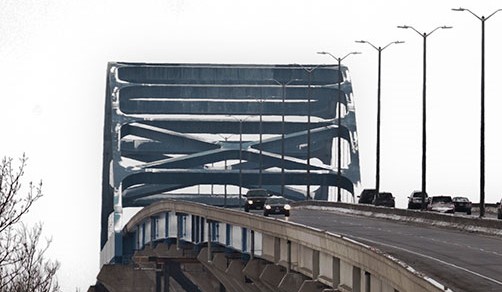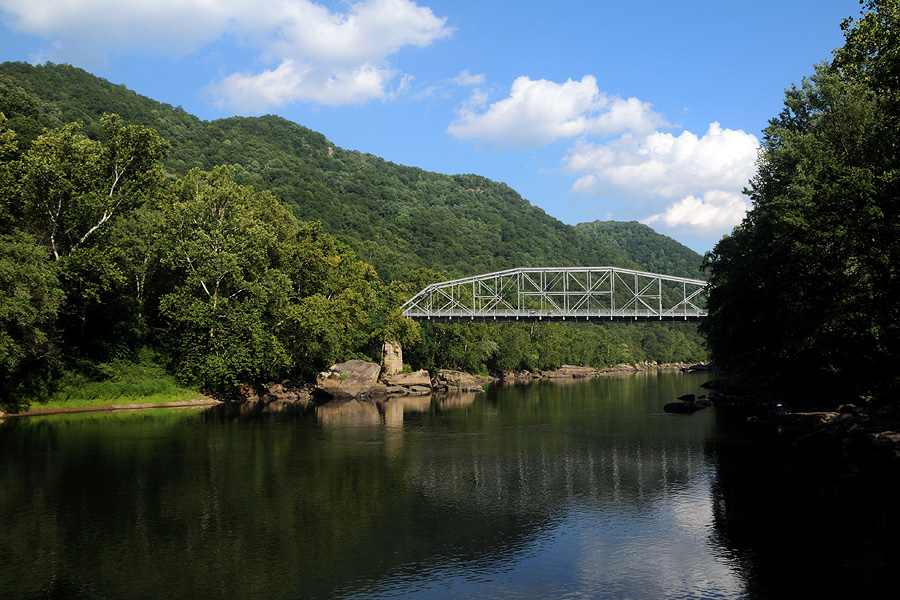State transportation officials plan to perform an assessment on a Green Bay bridge that carries more than 40,000 vehicles each day to identify the risk of collapse if it were hit by a commercial vessel.
A new report from the National Transportation Safety Board recommends conducting vulnerability assessments on 68 bridges across the country at risk of a vessel collision. The Leo Frigo Memorial Bridge in Green Bay was the only bridge identified in Wisconsin.
The NTSB report was released as part of the investigation into the 2024 collapse of the Francis Scott Key Bridge in Baltimore. Federal authorities found the bridge was nearly 30 times above the acceptable risk threshold when it was struck by a containership.
Stay informed on the latest news
Sign up for WPR’s email newsletter.
The 68 bridges identified in the report, along with the Key Bridge, were designed before current vulnerability assessment calculations were required in the design of new bridges, the NTSB said, and do not have a current assessment.
During a media briefing last week, Jennifer Homendy, chair of the NTSB, said the 68 bridges listed in the report faced an “unknown level of risk of collapse” from a vessel collision because they have not undergone an assessment “based on recent vessel traffic.”
“What we are telling bridge owners is that they need to know the risk and determine what actions they need to take to ensure safety,” she said.
The Leo Frigo Bridge opened in 1981 and carries Interstate-43 over the Fox River, just south of the bay of Green Bay. It’s owned by the Wisconsin Department of Transportation.

Josh Dietsche, director of the state DOT’s Bureau of Structures, said the state inspects all bridges every two years, and the Leo Frigo Bridge was last inspected in September.
He said certified bridge inspectors have determined the bridge is in “fair condition,” but the state plans to follow the NTSB’s recommendations.
“The NTSB report is asking us to run a very specific calculation and very specific risk analysis that comes from those most recent design guidelines,” Dietsche said. “We will run through that analysis as they request. We think it’s the proper thing to do, just out of due diligence.”
Dietsche also said the state DOT has conducted reviews of the risk of the Leo Frigo being hit by a vessel and feels the risk is “pretty low.”
The Port of Green Bay is much smaller than ports taking ships coming in off the ocean, so the ships going underneath the Leo Frigo tend to be smaller ships, Dietsche said. The size of the channel under the bridge also limits the risk because it’s only 20 to 25 feet deep, he said.
“We’re pretty comfortable that the risk of a hit, or even some kind of collapse if it were hit, is very low,” he said.
The Blatnik Bridge, which connects Superior to Duluth, was also built before current vulnerability assessment guidelines were in place. But it was one of four such bridges in the report that did have a current assessment.

The Blatnik Bridge is also slated to be replaced as part of a federally-funded project expected to begin construction in 2027. The bridge is co-owned by Wisconsin and Minnesota DOTs.
Dietsche said the Blatnik Bridge sees more traffic and larger ships pass underneath it than the Leo Frigo Bridge because it sees vessels going toward both the Port of Duluth and the Port of Superior.
“The new bridge that’s going to replace the existing bridge will comply with all standards that are out there and then some,” Dietsche said. “We certainly want to make sure that anything we’re building is as safe as it can be, and limit the risk to the extent possible.”
Wisconsin Public Radio, © Copyright 2025, Board of Regents of the University of Wisconsin System and Wisconsin Educational Communications Board.


